READING JOGS THE MIND BY JEAN MOIZE
ACTION BASED LEARNING LESSONS FOR ELEMENTARY ELA
These are simple, proven methods delivered in a 1 page format for the educator to easily implement and help students anchor ELA concepts.
Brain Based v. Brain Compatible
Part of Action Based Learning is delivering information to students in a brain-based brain compatible way to ensure better encoding, storage and retrieval of information. Action Based Learning teachers give clear, concise directions, facilitate groups efficiently, celebrate the learning, process what happened in the brain and apply the learning.
Embodied Cognition is an Action Based Learning strategy that uses gestures, actions, and motion to explain a concept. The information is stored in several areas of the brain when more of the senses are involved increasing the possibility of retrieving learned concepts.
Each lesson uses purposeful movement layered with ELA concepts to
- To reinforce ELA concepts & anchor learning in the classroom
- To prepare the brain for learning new ELA concepts
- To prepare the brain for testing
The lessons are designed to be paired with existing curriculum standards, and cover the following ELA concepts:
● LETTER RECOGNITION/LETTER FORMATION
● ALPHABET
● LETTER SOUNDS
● WORD RECOGNITION
● SPELLING
● PUNCTUATION
● PARTS OF SPEECH
● WORD DEFINITIONS
● WRITING
● CONTEXT CLUES
● STORY TELLING
● READING IS FUN!
● LINKING LITERATURE
Who benefits from Action Based Learning Lessons?
All students can learn. All students’ levels of health and wellness can be improved. Both are dynamic systems that are constantly changing. Neuroplasticity is the ability of the brain to change throughout our lifetime. Brains can and do change. Because of epigenetics, teachers can have a positive impact on a changing brain by providing a brain-based compatible learning environment that fosters optimal learning.


























